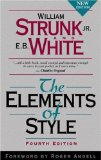Do we really need fewer commas, as current writing trends suggest? I can see cutting back on some of them (some people get very comma-happy if they’re not careful). But commas were invented for a reason, you know. And few of those reasons have vanished. Let me show you an example of a product blurb that needs both a comma insertion and a sentence rewrite.
These examples are taken from a blurb on the International Hockey Hall of Fame page for a replica of a square puck, used in a particular game. Here are the first two sentences:
Hockey’s most unique souvenir! A replica of the square puck used in the first organized hockey game played in Kingston, Ontario in 1886 between Queen’s University and Royal Military College of Canada.
First question: Is this blurb speaking of the “first organized hockey game” ever? Or just the first one played in Kingston, Ontario? You can’t tell, just from reading this blurb. BUT. Insert a comma after “game,” so you say, “used in the first organized hockey game, played in Kingston…,” and you’ve got the answer. It’s the first organized hockey game. Period. Without that comma, it’s the first ever in Kingston. Yet I have a feeling the IHHOF doesn’t mean that.
Now look at the next sentence in the blurb:
This carefully crafted rubber square puck includes a scene from hockey’s first game played on the historic Kingston harbour that is carved directly into one side of the puck.
Oh dear. Kingston harbour is carved directly into this puck? How can even the smallest ships fit in there?
In fact, using the word “that,” the IHHOF is even more explicit. It’s not just any old Kingston harbour (is there one in Jamaica too? England?). It’s the “Kingston harbour that is carved directly…” It’s that one, not a different one.
So how should the two offending sentences be written, to be absolutely clear? Taking the IHHOF to mean that this was the first organized hockey game ever, you would write these sentences like this:
A replica of the square puck used in the first organized hockey game, [note the comma] played in Kingston, Ontario, in 1886, between Queen’s University and Royal Military College of Canada. This carefully crafted rubber square puck includes a scene, carved directly into one side of the puck, from hockey’s first game played on the historic Kingston harbour
that is carved directly into one side of the puck.
Now it’s clear. Now we know. So yes — properly used commas help make our meaning clearer. And it really does matter how we organize the parts of our sentences. We may know what we mean (as the IHHOF writer did), but unless we make the sentence absolutely clear, our readers may not.




